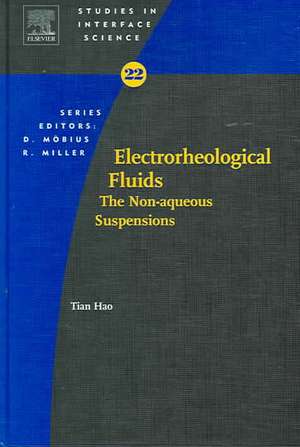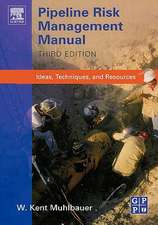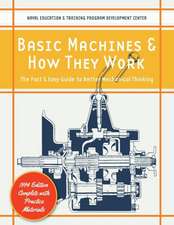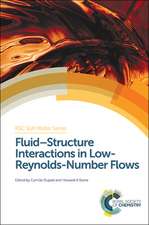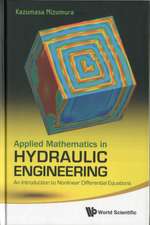Electrorheological Fluids: The Non-aqueous Suspensions: Studies in Interface Science, cartea 22
Autor Tian Haoen Limba Engleză Hardback – 28 noi 2005
* Applications of ER suspensions are of wide interest both in academia and industry* Surveys a large body of literature on the mechanism of the ER effect and the design of industrially applicable ER devices* Discusses technological problems affiliated with industrial applications
Preț: 1493.88 lei
Preț vechi: 2046.41 lei
-27% Nou
Puncte Express: 2241
Preț estimativ în valută:
285.89€ • 298.09$ • 237.60£
285.89€ • 298.09$ • 237.60£
Carte tipărită la comandă
Livrare economică 21 martie-04 aprilie
Preluare comenzi: 021 569.72.76
Specificații
ISBN-13: 9780444521804
ISBN-10: 0444521801
Pagini: 578
Dimensiuni: 165 x 240 x 27 mm
Greutate: 1.15 kg
Editura: ELSEVIER SCIENCE
Seria Studies in Interface Science
ISBN-10: 0444521801
Pagini: 578
Dimensiuni: 165 x 240 x 27 mm
Greutate: 1.15 kg
Editura: ELSEVIER SCIENCE
Seria Studies in Interface Science
Public țintă
For those working in the ER fluids area/related application fields and informing those interested in non-aqueous systems including polymer and polymer compositesCuprins
1. Colloidal suspensions and electrorheological fluids. 2. Viscosity of liquids and colloidal suspensions with and without an external electric field. 3. The positive, negative, photo-ER, and electromagnetorheological (EMR) effects. 4. The electrorheological materials. 5. Critical parameters to the electrorheological effect. 6. Physics of electrorheological fluids. 7. Dielectric property of non-aqueous heterogeneous systems. 8. Dielectric properties of ER suspensions. 9. Mechanisms of the electrorheological effect. 10. Applications of the electrorheological fluids.
